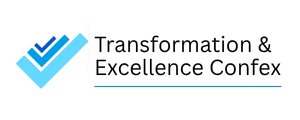Business Transformation: Cross-Industry Lessons for Resilience & Growth
In today’s rapidly evolving global landscape, every business, regardless of its size or sector, is grappling with the imperative of transformation. Whether it’s driven by technological advancements, shifting market demands, unforeseen disruptions, or the pursuit of competitive advantage, the journey of transformation is rarely linear. It’s a complex expedition demanding not just strategic foresight but also profound resilience and a clear vision for sustainable growth.
While the specifics of transformation may vary from a tech giant reinventing its service model to a traditional manufacturing firm embracing Industry 4.0, the underlying principles of navigating change successfully often share common threads across industries.
The Imperative of Agility and Adaptability: Perhaps the most frequently cited lesson is the critical need for agility. Organizations that thrive during transformation are those that can pivot quickly, adapt to new information, and even embrace unexpected detours. Think of companies like Netflix, which successfully transformed from a DVD rental service to a streaming powerhouse, or Amazon, constantly expanding its ecosystem beyond e-commerce into cloud computing and AI. Their success wasn’t just about identifying a new direction but about building an organizational muscle for continuous adaptation. This means fostering a culture that encourages experimentation, learning from failures, and empowering teams to respond swiftly to market signals.
Embracing Digital at the Core: Digital transformation isn’t just a buzzword; it’s a fundamental shift that underpins resilience and growth. From leveraging AI for personalized customer experiences (like Starbucks or various banking institutions) to optimizing supply chains with advanced analytics and automation (seen in retail and manufacturing), digital technologies are the accelerators. Businesses that integrate digital tools and data-driven decision-making into their core operations are better equipped to anticipate changes, enhance operational efficiency, and maintain a competitive edge. This often involves migrating to cloud-based systems, implementing robust ERPs, and investing in cybersecurity.
Customer and Employee Centricity: Successful transformations aren’t just about technology or processes; they’s deeply human. Companies that prioritize the experience of both their customers and employees tend to see greater adoption and sustained success. For instance, Starbucks’ investment in mobile ordering or the public sector’s focus on digital resilience through user-friendly services demonstrates a clear customer-centric approach. Internally, fostering a growth mindset, upskilling the workforce, and ensuring clear communication during change initiatives are vital for building internal champions rather than just users. When employees understand the “why” behind the transformation and are equipped with the new skills, they become powerful drivers of change.
Building a Culture of Continuous Learning and Collaboration: The transformation journey is continuous. Organizations that view it as a one-time project often falter. Instead, fostering a culture of continuous learning and cross-functional collaboration is paramount. This means breaking down silos, encouraging knowledge exchange, and even seeking external partnerships to leverage diverse expertise. Examples from the World Economic Forum highlight how youth entrepreneurship education, focused on problem-solving and collaboration, builds future workforce resilience. Similarly, cross-industry collaborations, as seen in various sectors working towards sustainability or supply chain improvements, show that collective effort can unlock new avenues for innovation and growth.
Strategic Resilience, Not Just Reactive Survival: True resilience goes beyond merely surviving disruptions. It’s about proactively integrating resilience into the core strategy, allowing businesses to not only withstand shocks but to emerge stronger and capture new opportunities. This involves dynamic scenario planning, diversifying revenue streams, and building flexible cost bases. As McKinsey research suggests, resilient companies don’t just protect their bottom line during crises; they actively look for ways to gain a differential advantage.
Conclusion: The journey of transformation, while challenging, is an undeniable path to sustained growth and competitive advantage. By learning from the experiences of diverse industries – embracing agility, leveraging digital capabilities, prioritizing people, fostering continuous learning, and building strategic resilience – businesses can not only navigate change but also thrive in its wake. These cross-industry lessons underscore that transformation is not merely about adapting to new circumstances, but about intentionally shaping a more robust, agile, and future-ready organization.
This crucial topic, “Navigating the Transformation Journey: Cross-Industry Lessons in Resilience & Growth,” will be explored in depth at the Business Transformation & Operational Excellence (TrEx) Mumbai Conclave. Gain invaluable insights from industry leaders and practical strategies to apply these cross-industry lessons to your own organization.
Don’t miss this opportunity to empower your business for the future. Click to Register now!
Need any help regarding registration? Please feel free to email us at info@btopex.com or cs@confexco.com.




